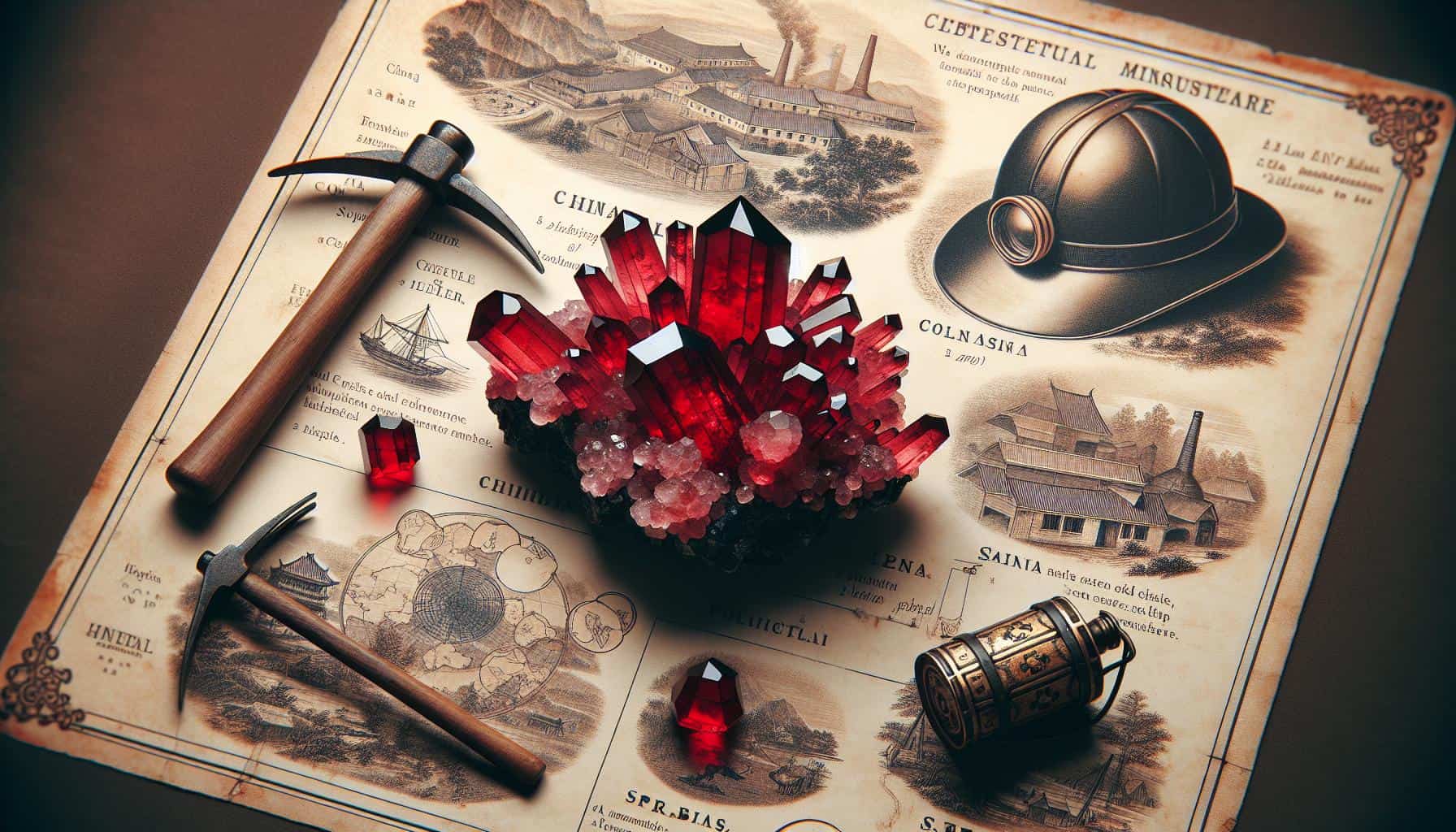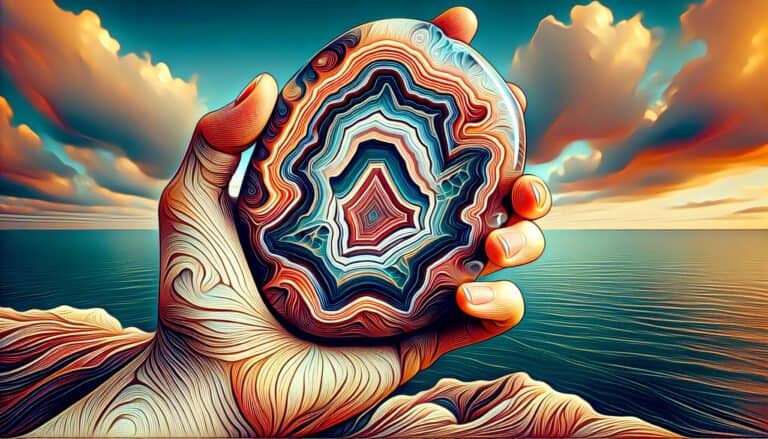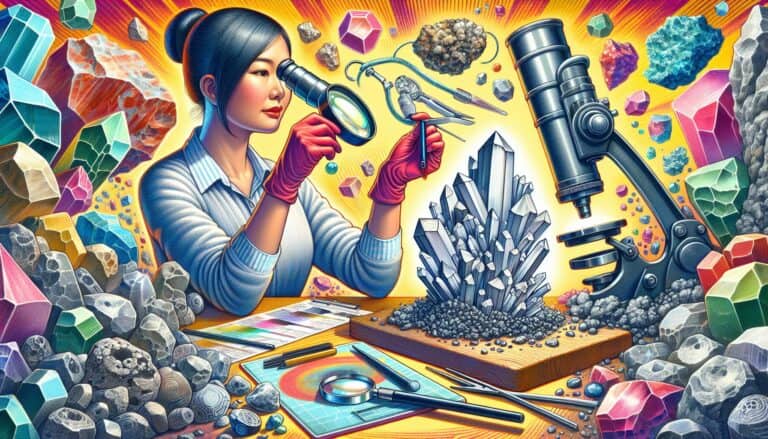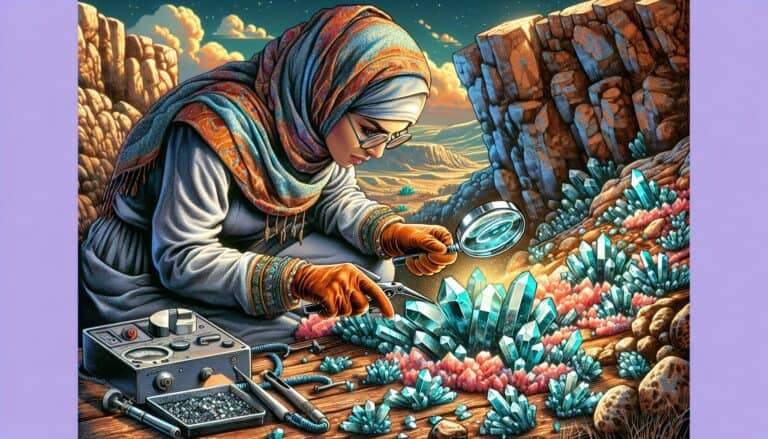Curious about the value of cinnabar?
You’re not alone. This vibrant red mineral, once prized for its mercury content and used as a pigment, has a fascinating history. Today, it’s sought after by collectors and those intrigued by its unique properties.
Understanding cinnabar’s worth isn’t just about the current market price. It’s also about appreciating its rarity and the factors that influence its value.
Whether you’re a seasoned collector or simply curious, you’ll want to know what makes cinnabar so special and how its value is determined.
Cinnabar’s value is influenced by color intensity, size, matrix presence, and historical artifacts. Deep red cinnabar is more valuable, especially in larger sizes or with minimal matrix. The historical significance of cinnabar artifacts also adds to their worth. Ensure authenticity through reputable sources when considering cinnabar purchases.
What Is Cinnabar?
Cinnabar is a stunning mineral that has captured the attention of collectors and historians alike. It’s primarily mercury sulfide and is the most common ore for extracting mercury. Known for its bright red color—which ranges from brick red to a slightly orange-red hue—cinnabar has a lustrous shine and is often found in a crystalline form.
Boasting a hardness rating between 2 and 2.5 on the Mohs scale, cinnabar is relatively soft, making it suitable for carving intricate objects but also delicate and in need of careful handling. The mineral can be found in various regions around the world, but some of the most significant deposits hail from Spain, Italy, China, and California.
Historical Significance
In ancient times, artisans used cinnabar for pigmentation, creating a vivid red dye that was highly prized in art and decoration. The Chinese, in particular, valued cinnabar for its color and often used it in lacquerware that has stood the test of time.
Safety Precautions
Today, one can’t discuss cinnabar without addressing its mercury content, making it a topic of health and environmental concerns. Handling raw cinnabar requires caution, as mercury exposure can pose serious health risks. Consequently, specimens are often handled and stored with protective measures in place.
Market Value Drivers
The worth of cinnabar is influenced by factors such as color saturation, size, and the presence of matrix—attached rocks or minerals that can either enhance or detract from its value. Similarly, carvings and other historical artifacts made from cinnabar are subject to valuation based on the artistry, condition, and provenance.
Understanding cinnabar means delving into its attributes and history—a mineral with a legacy that goes much deeper than its market price. As you explore the world of cinnabar, it’s this rich context that enhances your appreciation for each red-hued specimen.
Cinnabar Prices: Factors That Affect Value

When you’re in the market for cinnabar, the value of a piece can be influenced by several factors. Understanding what impacts the price will help you make informed decisions whether you’re collecting for pleasure or investment.
Color, Clarity, and Cut Quality
The color of cinnabar is one of the most significant factors in determining its value. Pieces exhibiting a deep, vibrant red color are generally more coveted and therefore more expensive. The intensity and uniformity of the color contribute greatly to the overall appeal of the mineral. Clearness, or clarity, is also essential; specimens with fewer impurities or inclusions are preferred. These qualities together enhance the beauty of cinnabar and can sharply increase its worth.
The cut of cinnabar, while less common in natural mineral collections, can additionally affect its desirability. A high-quality cut helps to showcase the stone’s color and can make it stand out, particularly if it’s being used for jewelry. Artful cutting and shaping can turn an ordinary specimen into a stunning piece.
Market Demand and Availability
Cinnabar’s rarity and the demand for it play a crucial role in its valuation. As with all finite resources, the harder a mineral is to source, the more valuable it becomes. With cinnabar, location-specific dynamics also come into play. Specimens from certain mines may be more sought after due to unique characteristics or historical importance related to those sites.
The overall market demand impacts cinnabar prices significantly. Increased interest in minerals for decor or holistic practices can drive up prices. Conversely, public awareness of the potential toxicity of mercury in cinnabar could affect its desirability negatively, thus impacting its market value. As with any goods, the balance between supply and demand is a constant dance, with prices reflecting the current state of the market.
Monitoring these factors will give you a clearer sense of what you should expect to pay for cinnabar, and likewise, what you might ask if you’re considering selling. Remember, each piece is unique, and its worth is ultimately determined by what someone is willing to pay for it.
Understanding Cinnabar: A Rare Gem
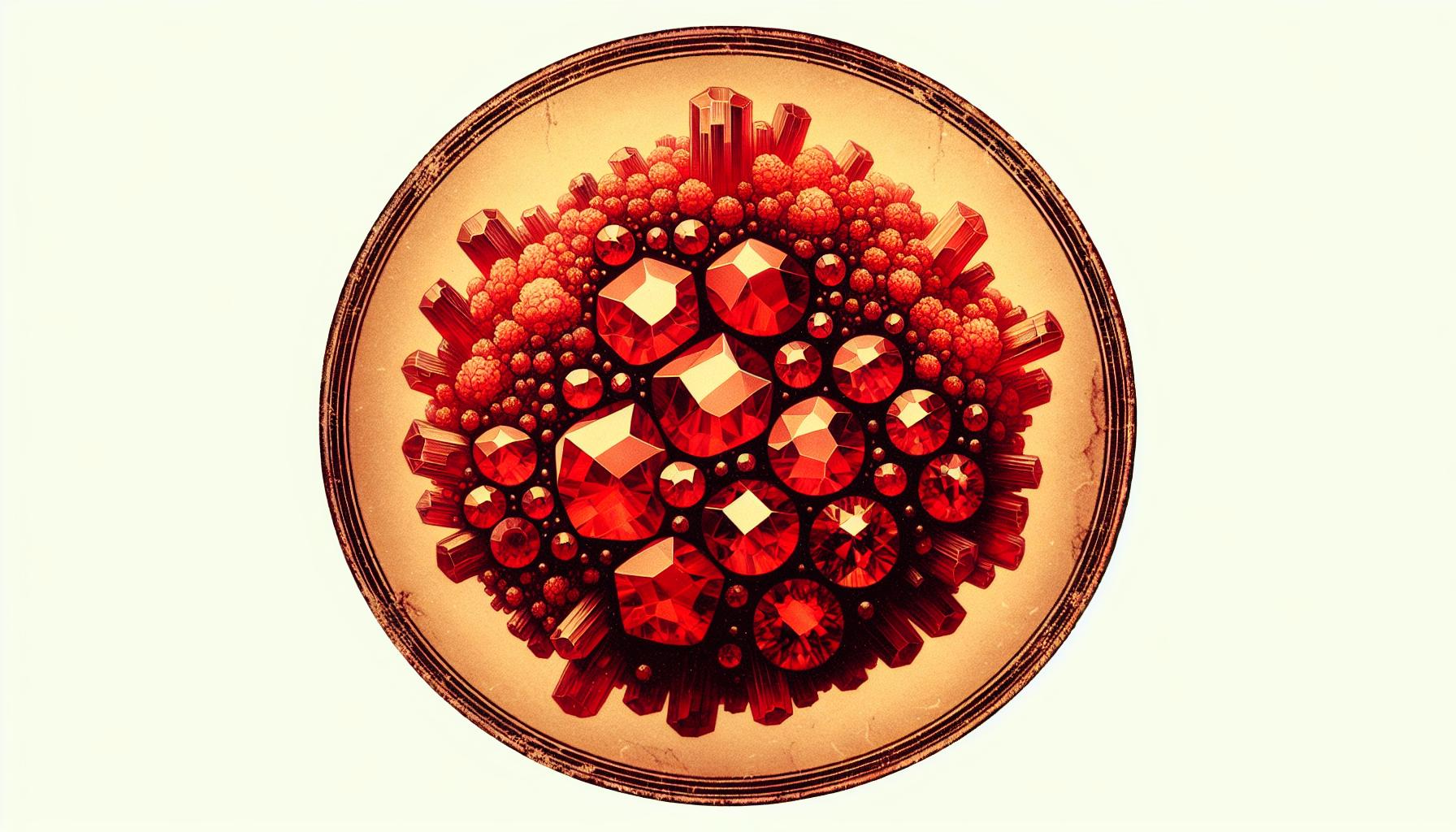
When you’re delving into the world of gemstones, cinnabar stands out due to its rarity and beauty. The value tied to this mineral is not just on the surface—it goes much deeper, stemming from its scarcity and unique properties.
The Rarity of Cinnabar
Cinnabar’s uniqueness is intrinsically linked to its availability. It is not a gemstone you’ll find in every jewelry store or rock shop.
- Limited Locations: Cinnabar is predominantly mined in China, Spain, and Serbia, with China being the most notable source.
- Mining Difficulties: The process of extracting cinnabar can be challenging due to environmental concerns and the need for careful handling because of its mercury content.
- Market Availability: The gem’s scarcity directly affects its presence in the market, making authentic cinnabar pieces relatively hard to come by.
Due to these factors, cinnabar often carries a premium, especially for specimens that exhibit the most sought-after characteristics, like the vibrant red color and high clarity.
Origins and Characteristics
Cinnabar has a storied past and an array of features that contribute to its allure.
- Historical Significance: Traditionally used for pigmentation and ornamentation, cinnabar has been valued by various cultures—its use can be traced back to ancient civilizations, such as the Romans and the Chinese.
- Chemical Makeup: It’s primarily mercury sulfide, a compound that lends the stone its signature red hue.
- Physical Properties: Cinnabar often forms near volcanic activity and hot springs, occurring as both crystalline and massive deposits.
The combination of its rich history and distinctive characteristics make cinnabar a fascinating subject for gem enthusiasts and collectors alike. Understanding where cinnabar comes from and what makes it so rare helps in appreciating its value and why it’s so prized in various markets.
Cinnabar Grading and Valuation
The Grading System for Cinnabar
When considering the value of cinnabar, grading plays a pivotal role. Much like gemstones, cinnabar’s worth is determined by several factors. Color intensity, surface texture, and the presence of impurities are among the key elements experts evaluate. A brighter and more vivid red color often indicates a higher grade, while dullness can detract from its overall value.
Cinnabar grading isn’t standardized like diamonds, which use the 4 Cs—clarity, cut, color, and carat weight. Instead, appraisers judge cinnabar based on general appearance and artistic merit, especially in carved items where craftsmanship can significantly influence value. It’s essential to understand that two cinnabar pieces of similar size can have drastically different valuations based on these subjective grading measures.
To navigate this nuanced market, you’re advised to seek knowledgeable experts who can accurately grade cinnabar artifacts. They’ll look for attributes such as:
- Deep, vivid red colors
- Minimal inclusions or impurities
- Quality and intricacy of carvings (if applicable)
These characteristics are desirable and enhance a cinnabar item’s worth. More opaque pieces with a grainy texture might be of lower quality, reflecting a reduced value in the market.
Certification and Appraisal
The presence of a certification can dramatically influence the value of cinnabar. Certifications offer proof of authenticity and quality, which are vital in a market where imitations are not uncommon. Certified appraisers will analyze your cinnabar, confirming its authenticity and providing a detailed report on its characteristics and estimated value.
Appraisal involves a thorough examination, during which specialists consider not only the cinnabar’s quality but also its historical relevance and provenance. Provenance, including the item’s origin and ownership history, can add significant intangible value. The appraisal process typically includes:
- A physical examination
- Historical research
- Market analysis
An appraisal offers more than just a price tag; it provides a snapshot of an item’s standing in the broad spectrum of antiques and collectibles. Remember, appraised value might differ from what buyers are willing to pay, so treat it as a guide rather than an absolute.
To ensure you’re getting an accurate evaluation, select an appraiser affiliated with reputable organizations like the American Society of Appraisers (ASA) or the International Society of Appraisers (ISA). They abide by professional standards and ethics, ensuring that the cinnabar’s value is assessed fairly and accurately. If you’re looking to insure your cinnabar or include it in an investment portfolio, a professional appraisal is indispensable.
Current Market Trends in Cinnabar Pricing
The dynamic world of mineral collecting significantly influences cinnabar pricing. If you’re keen to invest or collect, staying abreast of current market trends is crucial. Recently, cinnabar prices have seen an uptick, driven by increasing demand from collectors and decorators yearning for unique and exotic items. Alongside aesthetic value, the interest in metaphysical properties has bolstered market value.
In emerging markets, such as health and wellness, cinnabar’s appeal as a healing stone is surging. With this niche demand, pricing for higher quality specimens is on the rise, especially for those boasting a vibrant vermilion hue—synonymous with top-tier cinnabar.
China remains a significant influence on cinnabar pricing due to its historical connection and substantial reserves. Artifacts and carvings from the region fetch higher prices, reflecting the cultural heritage embedded in each piece. However, buyers are advised to be wary of replicas that can affect genuine cinnabar’s perceived value.
Environmental regulations have tightened around mining practices, contributing to short-term scarcity and longer-term uncertainty in supply. This scarcity has a direct correlation to pricing, pushing values upward as buyers scramble to purchase available stock.
The table below offers a snapshot of cinnabar’s price range based on quality and type:
| Quality & Type | Price Range |
|---|---|
| Rough ore | $20 – $50 per pound |
| Carved artifacts | $100 – $500+ |
| Jewellery-grade polished | $50 – $200 per item |
Remember, the condition and provenance of cinnabar can significantly affect its market value. Pieces with documented histories or provenance from known mines attract premium pricing. Uncertainties in the market, such as environmental concerns and legislation, could further impact future pricing trends, making it essential for you to monitor closely if you’re looking to buy or sell.
Certification from a recognized authority and the item’s history often justify price premiums. You might find two seemingly similar cinnabar pieces on the market, yet their values could differ substantially due to these factors.
In addition, the rare occurrence of cinnabar crystals in pristine condition creates a specialized market segment where prices can soar into thousands for a single high-quality crystal. It’s a market fueled by rarity and the allure of owning something truly unique.
The Most Expensive Cinnabar
When you’re delving into the world of precious minerals, certain specimens of cinnabar stand out for their hefty price tags. Exceptional quality and rarity are the prime drivers behind the value of the most expensive cinnabar pieces. Historically and today, large specimens with vibrant red color, clear crystalline structures, and minimal impurities fetch the highest prices.
What Sets Premium Cinnabar Apart?
Seeking the crème de la crème of cinnabar, collectors are on a constant hunt for unique pieces that boast specific characteristics:
- Vivid Red Color: The more intense and uniform the color, the better.
- Size and Weight: Larger pieces are substantially rarer and therefore more valuable.
- Quality of Crystals: Well-formed crystals with sharp edges are highly sought after.
- Lack of Impurities: Specimens with fewer inclusions command higher prices.
Notable Sales in The Market
In recent years, noteworthy sales of cinnabar have highlighted the upper echelons of its market value. Auction houses often see fierce bidding wars when top-quality cinnabar is up for grabs. For example, a magnificent specimen sold for over $50,000, setting a benchmark for other fine minerals.
Price Influencers Beyond Rarity
It’s not just the rarity that inflates the price of these minerals. Provenance plays a crucial role; cinnabar with a documented history, especially from renowned mines or previous famous collections, can see their value skyrocket. Additionally, the aesthetics of the piece, such as its display quality and artistic patterns formed by the mineral, can significantly enhance its appeal and increase its worth.
It’s these factors together that culminate in the steep pricing of the most luxurious cinnabar pieces. Whether you’re in it for the investment or the sheer passion for collecting, understanding what contributes to the value is essential in navigating this exclusive market.
Bear in mind that the cinnabar market is fluid, with prices fluctuating based on demand and the discovery of new sources. Keep your eye on market trends and consider working with reputable dealers to ensure you’re making a sound investment.
Buying Cinnabar: Tips and Recommendations
When you’re ready to add a piece of cinnabar to your collection, knowing where to shop and how to ensure you’re getting the real deal is key to making a wise investment.
Where to Purchase High-Quality Cinnabar
The quest for high-quality cinnabar often leads discerning buyers to specialized mineral shows or reputable gemstone dealers. High-quality specimens are also frequently found through online platforms, but it’s crucial to vet the seller’s reputation and review feedback from previous buyers. Here are a few places you might want to consider:
- Mineral Shows: These events are ideal for seeing cinnabar in person and directly engaging with knowledgeable vendors.
- Online Gemstone Markets: Websites that specialize in minerals and gemstones can offer a wide range of options, allowing you to compare pieces side by side.
- Antique Shops: Occasionally, you might stumble upon antique items adorned with cinnabar lacquer, which can be quite valuable.
- Auctions: Keep an eye out for estate sales and auction houses that often feature vintage and high-quality cinnabar pieces.
Ensuring Authenticity and Value
Before you commit to a purchase, you should verify the authenticity and value of the cinnabar. Certification and provenance are your keys to confirming that the cinnabar you’re interested in is genuine and worthwhile. Follow these recommendations:
- Request Documentation: Ask for any certificates or documents that verify the cinnabar’s authenticity.
- Understand the Source: Provenance matters. Pieces with a traceable history may be more valuable.
- Get an Appraisal: For particularly costly items, consider getting an independent appraisal to substantiate the value.
- Inspect for Quality: Check for the hallmark deep red color and the clarity of the specimen. Remember that genuine cinnabar should contain mercury sulfide.
By keeping these tips and recommendations in mind, you’ll be well-equipped to navigate the market for cinnabar and make informed decisions about your purchases.
Conclusion: Buying & Selling Cinnabar
Your understanding of cinnabar’s worth now goes beyond mere numbers.
You’re aware that its value lies not just in its market price but also in its rarity, historical significance, and the intricate process of its extraction. Armed with the knowledge of where to find quality specimens and how to verify their authenticity, you’re now equipped to appreciate and potentially invest in this unique mineral.
Remember, the true measure of cinnabar’s worth is intertwined with its provenance and the story it carries. So when you’re ready to add cinnabar to your collection, approach each opportunity with the insight and confidence you’ve gained.

